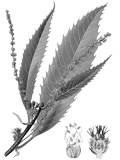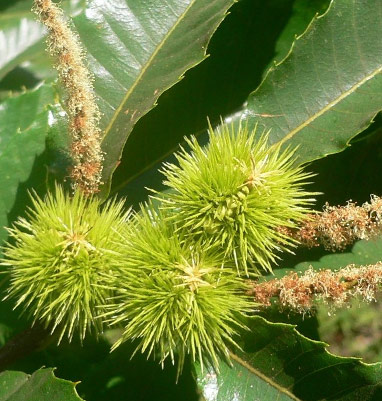
chestnut
Castanea sativa
Produced in the whole of Italy from the Alps to Sicily, in medium-range mountain areas, in June. This is a typical bitter honey rich in mineral salts, and is therefore highly appreciated by athletes.
Colour from amber to almost black depending on the area of production
Crystallisation in general no crystallisation
Aroma strong, penetrating and persistent
Taste similar to the scent, tannic, first penetrant, then more or less strongly bitter depending on the origin
Use this is the honey with the most mineral salts, and is therefore highly appreciated by athletes; ideally combined with Grana Trentino cheese, which brings out its natural sweetness
Natural characteristics of the plant known as a natural remedy for curing whooping cough, pharyngitis and diarrhoea
Available amounts 40g - 250g - 400g - 1000g
|
 |



